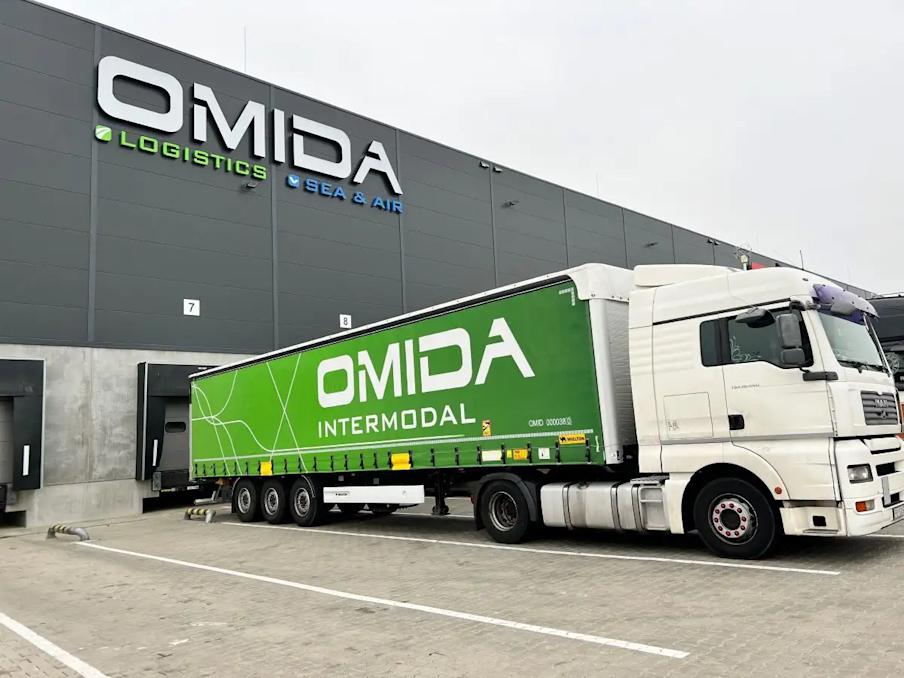Combined transport: what is it and what does it consist of?
In today's post we will discuss what combined transport is, what it consists of and its benefits. In some cases, taking into account the type of cargo, as well as the time required for the execution of the order, the best solution is to use several different branches of transport, that is, combined transport, divided into the following types: intermodal, container, break-bulk.
There are many methods of transporting goods, so we continue our series of articles in which we try to explain the fundamental issues in the industry. So far, we have already published texts on intermodal transport, what ADR transport is, and road transport, among others.
Definition of combined transport under the Road Transport Law.
According to the definition in the Road Transport Law, combined transport is a form of cargo transport that uses more than one forwarding branch, at least one of which is a means of road transport.
In practice, this means that during combined carriage, different modes of transport, such as road, rail, sea or air, are used to transport cargo from one point to another. Combined transport can be carried out using various transport units, such as containers, swap platforms or trailers, which allow goods to move safely and efficiently between different modes of transport.
Combined transport is mainly used to optimize the transport process, reduce costs and delivery times, and minimize transport risks. In addition, combined carriage is often used to transport large cargo whose size or weight makes it impossible to transport by a single mode of transport.
To sum up - if a cargo unit is delivered by truck, and all the rest of the transport is done by sea, rail or air, we can talk about combined transport, which has several types.

What is international combined transport?
International combined transport is simply a combined transport, during which national borders are crossed.
Directive 92/106/EEC - intermodal transport: combined transport of goods between EU countries
Directive 92/106/EEC lays down rules for the organization of intermodal transport within the European Union. It involves the use of different modes of transport, such as road, rail, sea or air, to transport cargo from one point to another.
The directive aims to facilitate the movement of goods within the EU, reduce costs and increase the competitiveness of European companies. According to the directive, EU member states should act to facilitate intermodal transport, especially by ensuring appropriate connections between different modes of transport.
The directive also sets standards for safety and other issues related to intermodal transport, such as the identification and registration of transport units and the exchange of information between transport operators. The aim is to ensure uniform standards across the EU, allowing goods to move freely between member states.
Combined transport of goods between EU countries is therefore based on the principles and regulations of Directive 92/106/EEC, which ensures harmonization of regulations and standards for intermodal transport. This makes it more efficient, safe and competitive, which contributes to economic development throughout the European Union.
Combined transport, and intermodal transport in particular, plays an important role in the EU's green transformation, providing sustainable and efficient logistics solutions.

Types of combined transport
There are several types of combined transport, depending on the combination of different logistics branches used, such as: - Container transport: combines sea and road or rail and sea, using containers.
- Intermodal transport: combines different modes of transport, using standard cargo units.
- Broken transport: combines road and rail or maritime transport, using cargo that does not fit into standard cargo units.
Why use combined transport?
Using a combined transport service allows you to reduce delivery times, reduce transport costs and minimize the risk of damage to goods along the route. By using different modes of transport, you can deliver cargo faster and more efficiently, while reducing transport costs.
When is it worth opting for combined transport?
It is worth opting for combined transport when you need to transport cargo from one point to another quickly and efficiently, using different modes of transport.Combined transport is particularly advantageous for large quantities of goods that cannot be transported by a single mode of transport.
What are the advantages of combined transport?
Combined transport has many advantages that attract entrepreneurs and companies that want to get their products to their customers quickly and safely. Here are some of the main advantages of the combined transport service:
- Reduced delivery time: The use of several modes of transport allows the cargo to reach the recipient faster and more efficiently than if it were transported by a single mode of transport.
-Cost optimization: Combined transport allows you to optimize costs by choosing the most economical and efficient means of transport to carry a given load.
- Minimizing the risk of damage to goods: The use of different modes of transport and special cargo units minimizes the risk of damage to goods during transport.
- Delivery of cargo to hard-to-reach places: Combined transport makes it possible to deliver cargo to places that cannot be reached by a single mode of transport, such as mountainous areas or areas far from main roads.
- Reducing CO2 emissions: the use of intermodal transport reduces CO2 emissions and energy consumption per cargo unit. Read more about how intermodal transport affects the global ecology.
- Ability to fulfill orders in different systems: the ability to fulfill orders in door-to-door and just-in-time systems.
- Reducing factors of weather and road conditions: reducing factors that adversely affect different modes of transport (e.g., congested routes or blocked border crossings).
In summary, the advantages of combined transport include reduced delivery time, reduced transport costs, minimized risk of damage to goods, the ability to deliver cargo to a location that is not accessible by a single mode of transport, and flexibility and customization for a given cargo.
What disadvantages does combined transport have?
When using this type of transport, some problems may also arise, such as:
-Increased logistics complexity: Coordinating different modes of transport and schedules can be difficult and require a great deal of attention. The organization of combined transport is a demanding task, so it is worth outsourcing.
- Need to coordinate different modes of transport: The availability of different means may be limited, requiring planning and coordination of their use.
- Risk of delays: Delays at one logistical stage can affect the entire transport schedule, which can cause additional costs and problems with customers.

Intermodal transport - what is it?
Intermodal transport is a type of combined transport, in which goods are transported by different modes of transport, but without the need to transship the goods. In this case, the cargo is carried in special cargo units, such as containers, which can be easily transferred from one mode of transport to another.
Broken transport - what is it?
Broken transport is one of the types of combined transport, which involves the transport of cargo by two different modes of transport, such as road and rail, or sea and rail. By carriage here, we mean the transport of cargo in individual cargo units that do not fit into standard units such as containers, but are carried on special platforms or in wagons.
Container transport - what does it consist of?
Container transport is a type of transport in which goods are transported using containers, which are special containers with standardized dimensions and design. Containers can be transported by different modes of transport, such as road, rail, sea or air, which allows goods to move easily between different modes of transport.
What is multimodal transport and how does it differ from intermodal transport?
Multimodal transport is a method of transporting goods that uses different modes of transport, such as road, rail, sea or air, to move cargo from one point to another. Multimodal transport incorporates different modes of transport to get cargo to its destination faster and more efficiently.
Intermodal transport is a narrowing of multimodal transport, in which goods are transported by different modes of transport, but without the need to transship the goods. In this case, the cargo is carried in special cargo units, such as containers, which can be easily transferred from one mode of transport to another.
The main difference between multimodal and intermodal transport is that in intermodal transport, cargo is carried in a single cargo unit, such as a container, while in multimodal transport, it can be carried in different cargo units, but still use different modes of transport. In intermodal transport, a cargo unit can be easily transferred from one means of transport to another without handling the goods.
What is bimodal transport?
Bimodal transport is a type of multimodal transport that combines two different types of transport modes, such as road and rail, to transport goods from one point to another. In bimodal transport, cargo is transported in a single cargo unit, which is carried by two different modes of transport without transshipment.
In summary, bimodal transport is another form of multimodal transport that allows optimizing transport costs and reducing delivery times. By using two different modes of transport, it is an efficient and environmentally friendly form of transport, especially when transporting large quantities of goods over long distances.
Combined bimodal transport versus regular bimodal transport. What is the difference?
The difference between bimodal transport and combined bimodal transport is due to the characteristics of the means of transport used:
Bimodal transport:
Bimodal transport uses two different modes of transport, such as trucks and trains. An example of bimodal transport is the movement of containers using trucks to a rail terminal, where they are transshipped onto a train.
The specification for bimodal transport involves the use of special trailers, which must meet specified criteria for resistance, rigidity, strength and equipment. Each unit used in bimodal transport must consist of an adapter, two sets of wheels and a braking system.
The transport is carried out without transshipment - the semi-trailer is first attached to the car and then to the rail car in a second stage.

Given the numerous advantages of mixed forwarding, it is not surprising that this particular field of transport is developing rapidly. In order to improve transport processes in Poland and Europe, we encourage you to contact our transport company by e-mail and telephone, as well as through the form available on the right.



